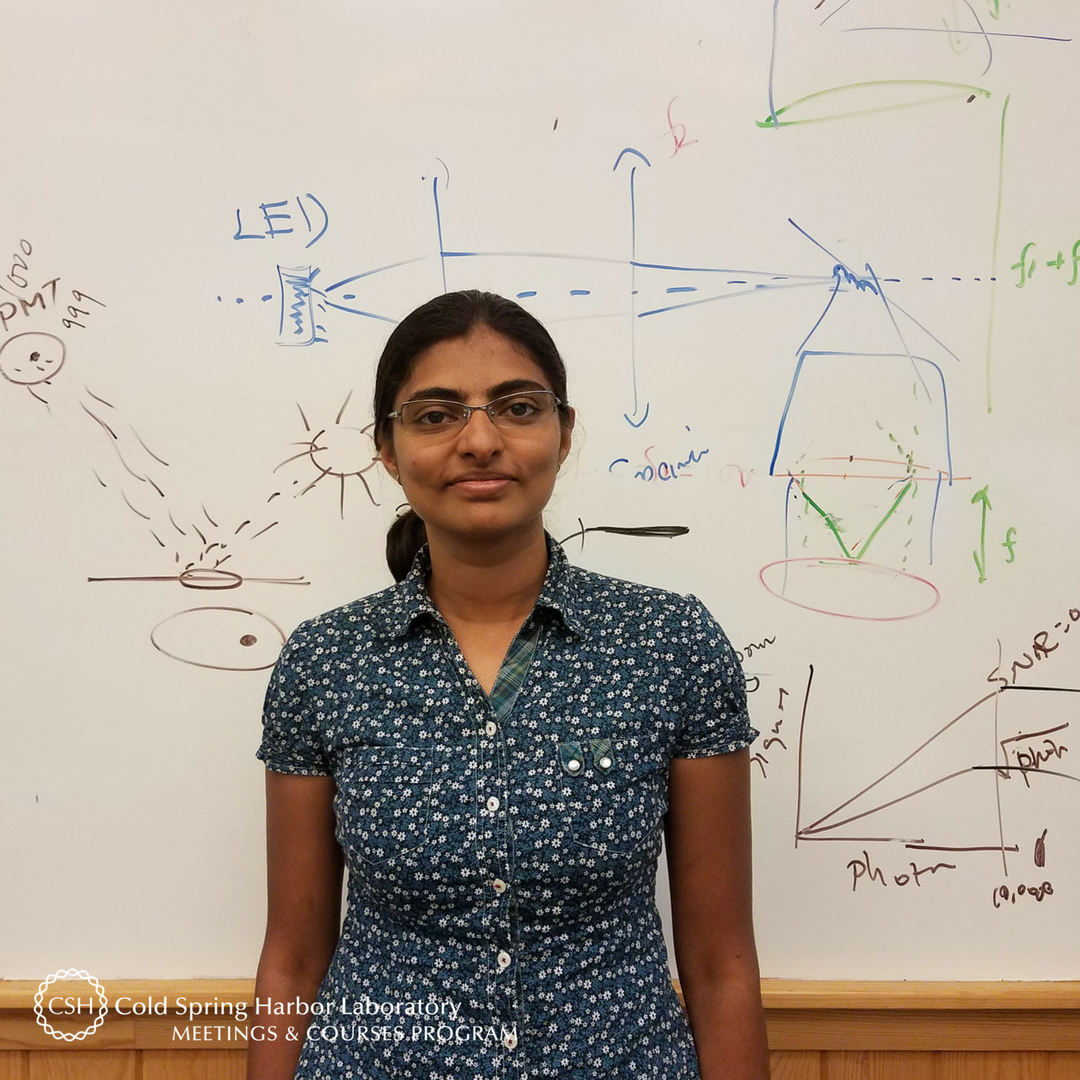Meet Tuce Tombaz of the Norwegian University of Science and Technology (Norway). The Turkish national is a Ph.D. candidate within the Kavli Institute for Systems Neuroscience and is currently training at our three-week summer course on Imaging Structure & Function in Nervous System. This is Tuce’s first course at CSHL, and she is our second trainee this summer hailing from Jonathan Whitlock’s lab.
What are your research interests? What are you working on?
My general interests cover a variety of topics spanning sensory and motor explorations in systems neuroscience. My work focuses on how rodent brains represent different aspects of behavior, and this interfaces with social cognition. More specifically, I investigate whether individual cells represent performed and observed actions similarly, a finding which could pave the way for understanding the neural bases of social learning.
How did you decide to make this the focus of your research?
Initially, I didn’t know. I have a background in molecular biology and genetics. I was interested in microscopy techniques to visualize things that are not visible to the naked eye. I have spent quite a of bit time in different labs to learn more about different methods that aim to answer different questions. I became very interested in my current project when I first read about it in the job description. It allows me to use imaging techniques to look for something fundamental to the animals’ experience.
How did your scientific journey begin?
I can’t specify an instance that inspired me, but having worked in multiple labs throughout my career enabled me to complete a combination of projects I completed that made me more curious about novel questions. I really enjoyed the collaborative aspects of these projects and thinking about how to solve difficult problems. It was initially at the molecular level and now at the behavior level.
Was there something specific about the Imaging Structure & Function in the Nervous System course that drew you to apply?
Yes, I knew that there is no other course which could teach so much about imaging techniques than this course. It is quite common that, during the span of the graduate program, you are extremely busy with acquiring data such that you are often unaware of the operative details of the system you are using. I was always curious to know how the system works and that fundamentally requires you to dismantle and assemble a microscope. During this course, I was able to set up multiple imaging systems from scratch and learn the theory behind them. I understand that the knowledge I will gather throughout the course will be invaluable, so I feel privileged to be here.
Though you’re only one third of the way through the course, what have you so far learned from it that you can apply to your work?
So far, I have learnt the very basics of optics, different types of imaging setups and how they are used. I also built wide-field and fluorescence microscopes. This knowledge can already be transferable because we don’t learn about any of these in graduate school and how it could all affect our data. By the end of the course I will be able to learn how to combine certain imaging systems with the optogenetic manipulations that would certainly be important for my project and also other projects in the lab.
Do you already have a takeaway from the course that you want to share?
It is really hard to pinpoint one so I will name two:
Know your imaging setup completely; what the bits and pieces are and what could potentially make a big difference.
Design the imaging setup according to your needs.
Both of these would give you a sense of what might be wrong with your imaging.
If someone curious in attending this course asked you for feedback or advice on it, what would you tell him/her?
I would highly encourage motivated scientists to attend this course. It is a very useful course if one is curious about how to build scopes for effective usage. I should also add that the course is intense. You will get to learn so much in a very short period of time.
What do you like most about your time at CSHL?
Meeting new people was definitely one of the highlights of this course. The campus is also very pretty.
Tuce received financial support from Howard Hughes Medical Institute (HHMI) to cover a portion of her course tuition. On behalf of Tuce, thank you to HHMI for supporting and enabling our young scientists to attend a CSHL course where they expand their skills, knowledge, and network.
Thank you to Tuce for being this week's featured visitor. To meet other featured scientists - and discover the wide range of science that takes part in a CSHL meeting or course - go here.





